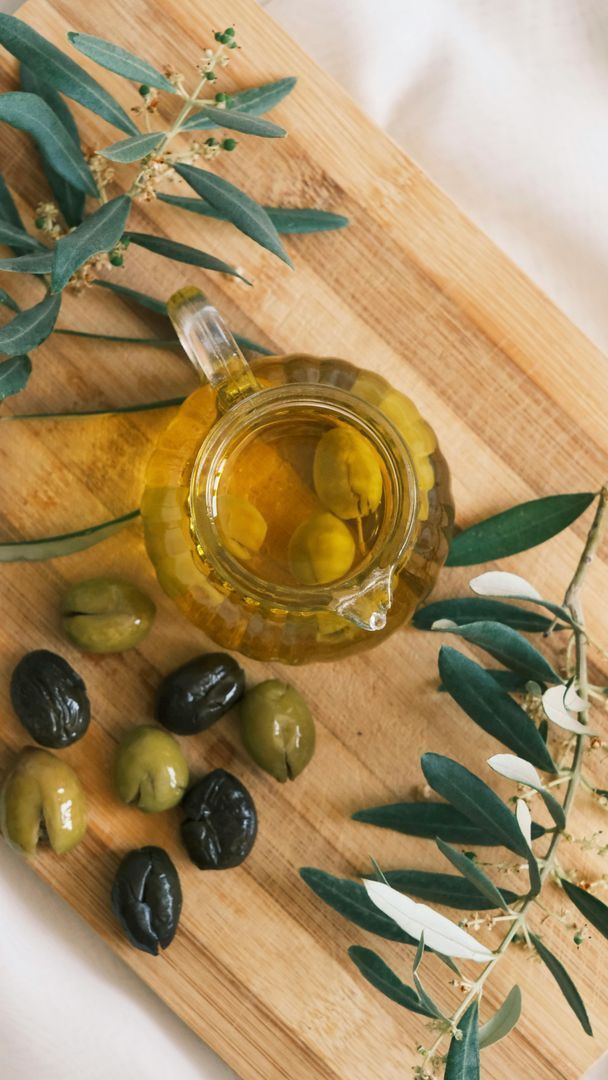White sediment in extra virgin olive oil: what is sludge and why you shouldn't worry.

Anyone who loves genuine, artisanal extra virgin olive oil knows it: as soon as you open a bottle of new oil, you might notice a thick, whitish or brownish deposit at the bottom, or a milky cloudiness when its cold. This is called sludge . But what exactly is it? Is it a sign of low quality or authenticity? And, above all, is it safe to consume?
In this article, youll discover everything you need to know about the dregs of extra virgin olive oil : what theyre made of, why they form, when theyre normal and when theyre not, how to best store them, and how to handle them in the kitchen.
What is sludge?
Lees are a natural deposit that forms at the bottom of bottles or cans of unfiltered extra virgin olive oil. It is composed of:
- Microscopic particles of olive pulp and pit, residues from the pressing process;
- Vegetation water (the water naturally contained in olives);
- Mucilages and colloidal substances;
- Traces of enzymes and polyphenols.
It is a completely natural phenomenon, typical of artisanal oils, especially those bottled immediately after milling without industrial steps such as filtration.
Why does it appear white or milky in color?
During the winter months, you may notice that extra virgin olive oil appears thicker, cloudy, or with white spots, similar to flakes. This is due to the crystallization of fatty acids.
Specifically:
- Oleic acid, the predominant fatty acid in EVO oil, solidifies at temperatures below 10°C, forming those typical “white clumps.”
- This phenomenon is reversible: by bringing the oil back to room temperature (18–20°C) and gently shaking the bottle, it becomes clear again.
⚠️ Important: this is not mold, spoilage, or contamination. It is a natural behavior of high-quality unrefined oils.
✅ Morchia: a flaw or a virtue?
It depends on usage and timing.
➕ ADVANTAGES:
- Unfiltered oils retain a higher amount of polyphenols, vitamins, and antioxidant compounds.
- They offer more intense and authentic aromas, with grassy, almondy, or spicy notes.
- They are ideal for those seeking a product as close to nature as possible, especially when used raw.
➖ DISADVANTAGES:
- Lees are organically active: over time, they can lead to fermentations that compromise aroma and flavor.
- Oil with lees that is poorly stored or too old may develop organoleptic defects such as rancidity or a winey smell.
- It has a shorter shelf life: it's best to consume it within 3–4 months of production.
🛒 How to recognize unfiltered oil and handle it correctly
- Label: many producers indicate “unfiltered” or “new oil” on the label.
- Appearance: the oil appears cloudy, with a dull color and sometimes visible clumps.
- Taste: more vibrant, pungent, and aromatic.
How to store it:
- In the dark, away from sources of heat and light.
- Well sealed and in an upright position.
- If it's very cloudy, you can filter it at home using a fine mesh strainer or cotton gauze to extend its shelf life.
🧪 Muck and food safety
Lees are not dangerous to health, but they can negatively affect the quality of the oil if not properly managed.
The risks:
- Spontaneous fermentations over time (especially in bottles left in warm or light-exposed environments).
- Formation of unpleasant volatile compounds.
- Premature oxidation.
Despite this, no food authority prohibits the sale of oil with lees. On the contrary, it is a common practice among small producers, especially during the milling season (October–December).
🇮🇹 Curiosities about Italian artisanal oil
- In some regions of Italy, such as Tuscany, Umbria, and Puglia, unfiltered oil is considered a product of excellence.
- Some producers sell it only in winter, labeled as “olio novello” (new oil).
- Lees can also be used in natural cosmetics to make ointments and soaps rich in antioxidants.
🔍 Difference between filtered and unfiltered oil
Characteristic Filtered Oil Unfiltered Oil Appearance Clear and bright Cloudy and dull Shelf life 12–18 months 3–6 months Taste More delicate More intense and rough Stability Higher Lower Presence of lees None Present ❄️ Why does sludge form in winter? Is it normal?
Yes, it’s normal. At low temperatures, oil thickens and changes consistency. The fatty acids crystallize, forming those white sediments, similar to flakes or small balls.
This phenomenon:
- Does not affect the taste or safety of the product;
- Is a sign that the oil has not been refined;
- Disappears once brought back to room temperature.
Avoid temperature shocks or the freezer: do not try to speed up the thawing process, as it may compromise the molecular structure.
📌 Conclusion: sludge, a sign of authenticity (to be respected)
The presence of lees in extra virgin olive oil isnt a defect , but a distinctive feature of genuine, non-industrial oils . It certainly requires more care and attention, but in return, it offers a superior tasting experience and a more direct connection to the agricultural world.
If you happen to see that white sediment at the bottom, dont throw it away : its just nature manifesting itself . Oil with lees is the product of an artisanal mill, using real olives, processed with passion.
Consume it with joy, respect… and a nice piece of rustic bread to accompany it.

alice96
Data di inserimento 22 apr 2025
Report article


Comments
There are no comments yet.